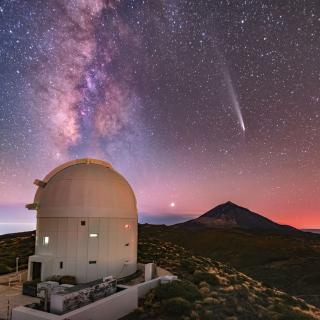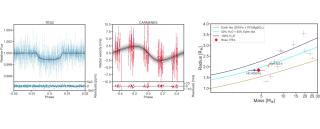The long-standing difference in chemical abundances determined from optical recombination lines and collisionally excited lines raises questions about our understanding of atomic physics, as well as the assumptions made when determining physical conditions and chemical abundances in astrophysical nebulae. Here, we study the recombination contribution of [O III] 4363 and the validity of the line ratio [O III] 4363/4959 as a temperature diagnostic in planetary nebulae with a high abundance discrepancy. We derive a fit for the recombination coefficient of [O III] 4363 that takes into account the radiative and dielectronic recombinations, for electron temperatures from 200 to 30 000 K. We estimate the recombination contribution of [O III] 4363 for the planetary nebulae Abell 46 and NGC 6778 by subtracting the collisional contribution from the total observed flux. We find that the spatial distribution for the estimated recombination contribution in [O III] 4363 follows that of the O II 4649 recombination line, both peaking in the central regions of the nebula, especially in the case of Abell 46 that has a much higher abundance discrepancy. The estimated recombination contribution reaches up to 70 and 40 per cent of the total [O III] 4363 observed flux, for Abell 46 and NGC 6778, respectively. In such cases, ignoring the recombination contribution leads to a wrong temperature determination.
The spatial profiles of the observed and expected [O III] 4363 (orange and green, respectively), residuals from subtracting the expected collisional [O III] 4363 profile from the observed one (red), and the O II 4649 profile scaled (blue).
Advertised on
Authors
Verónica Gómez-Llanos
Christophe Morisset
Jorge
García Rojas
David
Jones
Roger Wesson
Romano Luigi Maria
Corradi
Henri M. J. Boffin
References
![The [O III] spatial profiles The spatial profiles of the observed and expected [O III] 4363 (orange and green, respectively), residuals from subtracting the expected collisional [O III] 4363 profile from the observed one (red), and the O II 4649 profile scaled (blue).](/sites/default/files/styles/crop_rectangle_21x9_to_1280/public/images/news/A46.png?h=4c1d801a&itok=szJtYA8G)



